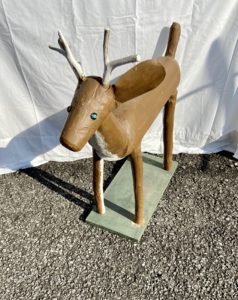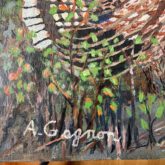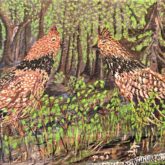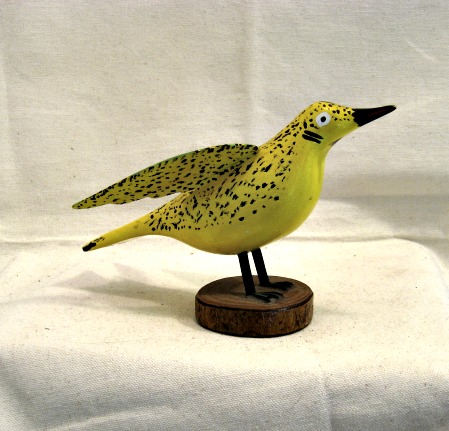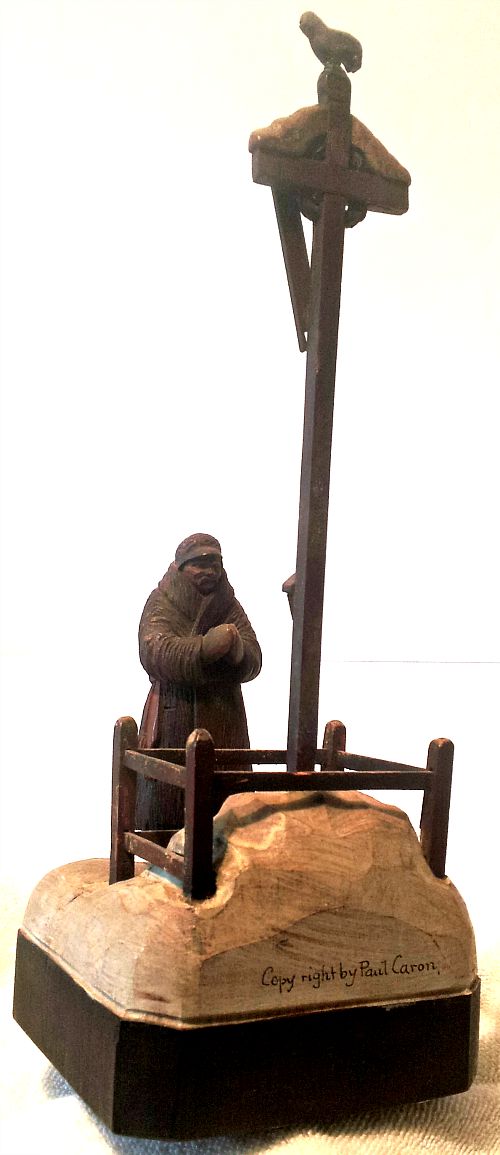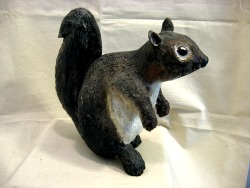Getting Lyle Elder Folk Art Back to Work
Getting this place active again.
Recently found on F B. A painting by A. Gagnon. (Full bio to come)
Some thoughts on Shadow Boxes and relief carvings.
Shadow Boxes.
Quebec Folk Artists, inspired by the engravings of Massicotte and interpretations of them by other artists, reproduced them in their own work. The Bourgault family of artists made many of these, particularly Andre Bourgault and artists in his studio. Celine Bourgault, was one who often signed her carvings. The work was often done by female artists as these images were sometimes very small and required small hands.
They were made in different sizes and they depicted traditional scenes of family and village life. The inside of Blacksmith shops. An interior scene of a Butcher’s shop. A tavern and General store. And family scenes of a kitchen or parlor with furniture and a grandfather clock. Always with people and a dog on the rug. If there was a window or an open doorway in the ‘room’, there would be a painted scene or a tiny piece cut from a local post card to create the view outside. They were made of Pine and Basswood (Tilleul) and always painted in watercolors.
I have seen wonderful little shadow boxes with these interior scenes covered by a window frame complete with sash and muntin bars (as though we, the viewer, were outside looking into the room) and a clear celluloid window pane. And one, in particular, signed in the lower right in ink: Celine Bourgault. It was a living room interior with a window on the opposite wall facing the viewer. Painted in the ‘window’ was a tiny view of the St. Lawrence River. This shadow box by Celine Bourgault was about 5 by 7 inches.
Relief Carvings. Les Bas reliefs.
Another sculptural form was relief carvings. From simple ones to the very elaborate. There were ones in the ‘flat plane’ carved style from Saint-Jean-Port-Joli; painted in water colors. And there were those more naïve and primitive; often painted in ‘as found’ colors – usually oil-based house paint. Some artists, like Yvonne Bolduc, made their own paints from materials at hand.
They carved and painted simple scenes like a house on a hill in winter and more developed themes like ‘The Doctors Visit’ or ‘The Mardi Gras at New Years’. ‘The Doctor’s Visit’ was carved by Yvonne Bolduc. Probably more than once. And ‘Mado’ Lizotte made fine applied reliefs of these themes several times. Both these artists have their works in Museum and private collections.
The materials used were Pine or Basswood panels and in the case of applied relief carvings ‘as found’ materials could include anything; any sort of material that was available.
I once had a (1930’s) mounted shadow box under glass of a Gaspe Shore boat model. It was wonderfully painted and adorned with every kind of nautical element. All along the railings of the model were mounted the round red life preservers of the time. And they were actually real Life Saver candies (the name was on them). They seemed a logical choice in ‘as found’ work. The size was right too.
A rare bird carving by Anne-Marie Voisine. Saint-Pascal de Kamouraska, Quebec.
First mentioned in “Les Patenteux du Quebec”; Mme. Voisine filled her yard and home with flowers and with painted cut-out carvings of people, animals, bird houses and birds. Roosting birds and birds on the wing. She worked with as found materials and colours and took her inspiration from the world around her. In an interview she said: “mon imagination trotte la nuit”. (My imagination ‘ runs’ at night.) Anne-Marie Voisine did not sign her work. Shown below is a rare carving of a yellow bird measuring about 8 inches long. (Email for more information.)
Yellow Bird carving by Anne-Marie Voisine. 1970’s:
